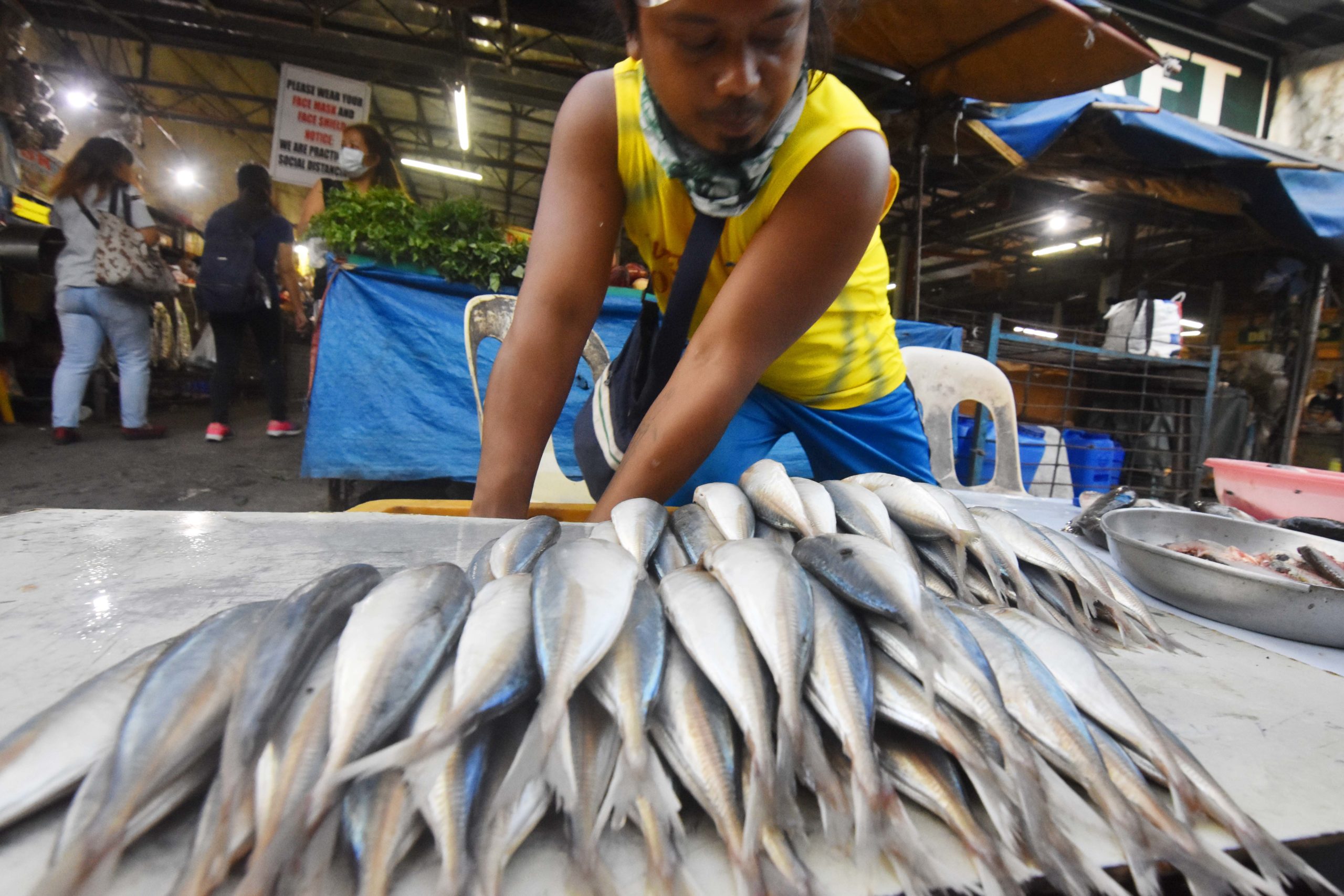
FILE PHOTO: In this public market in Dagupan City, the poor man’s food – galunggong (round scad) – is abundant. (INQUIRER/Willie Lomibao)
Weaker output from aquaculture and municipal fisheries pulled down the country’s fisheries production in the April to June quarter, the Philippine Statistics Authority (PSA) said.
The Philippines produced 1.02 million metric tons (MT) of fish in the second quarter of this year, down by 6.2 percent from the 1.07 million MT output recorded in the same period a year ago, a report by the PSA showed.
“Decrease in production was noted from marine municipal fisheries, inland municipal fisheries, and aquaculture, while commercial fisheries reported an increase in production,” the statistics agency said.
READ: PH fishers’ cry: Freedom to fish in our country’s waters, not ‘ayuda’
Aquaculture comprised 46.3 percent of the overall production, decreasing by 17.7 percent to 471,400.23 MT.
Municipal fisheries output stood at 259,465.6 MT, falling by 6.1 percent. It accounted for 25.5 percent of the total production.
Both marine municipal and inland fisheries registered declines during the comparative period.
Only commercial fisheries posted an increase of 21.9 percent to end at 286,602.75 MT. This is equivalent to a share of 28.2 percent.
By 2028
The PSA data also noted that reductions were logged in seaweed, round scad (galunggong), by-eyed scad (matangbaka), tilapia and milkfish (bangus).
Conversely, increases were observed in skipjack (gulyasan), yellowfin tuna (tambakol/bariles), frigate tuna (tulingan), P. Vannamei (putian), and bigeye tuna (tambakol/bariles).
The government aims to achieve 100-percent fish self-sufficiency by 2028 or the end of the Marcos administration’s term.
READ: Fish from 4 Metro cities, 4 provinces safe to eat, BFAR assures public
In line with this target, the Bureau of Fisheries and Aquatic Resources (BFAR) unveiled in February its strategic plan on covering the years 2023 to 2028 aimed at boosting local fish output.
The multiyear blueprint would focus on increasing productivity and reducing postharvest losses of fishery and aquatic resources.
Data from BFAR showed the country’s fish self-sufficiency reached 91.6 percent as of April.
Conservation
The Philippines is hosting the Western and Central Pacific Fisheries Commission Regular Session of the Scientific Committee scheduled for Aug. 14-21 which is expected to benefit the country’s tuna industry.
“The tuna industry is a major catalyst of economic growth and food security in our nation. As such, we are deeply interested in ensuring fair and equitable access to tuna resources,” Agriculture Undersecretary Drusila Esther bayate said during the gathering on Wednesday.
Bayate also said the committee’s recommendations for the conservation and management of tuna and other higly migratory fish stocks in the Western and Central Pacific regions “have resulted favorable” in conserving the country’s fish resources, particularly, bigeye tuna. INQ